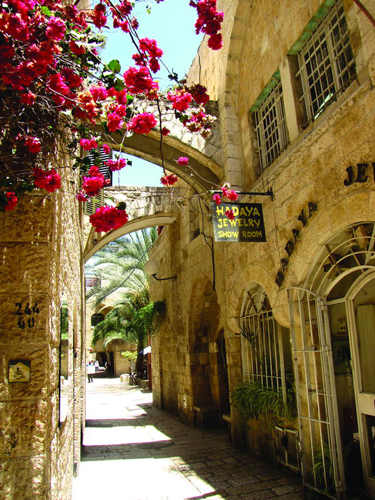.jpg)
Many, many people have fallen in love with the Old City’s Jewish Quarter, the “Rova.” Is it any wonder? Spirituality emanates from Har Habayit (the Temple Mount), the surrounding Judean hills and the remnants of thousands of years of Jewish history uncovered in practically every nook and cranny of the neighborhood. The Rova is a short walk to the Kotel for prayer services and moments of personal introspection and meditation, and one can find Torah classes conducted in many languages and on practically every level from beginner to highly advanced. The excitement of living literally in the center of the world, just steps away from where the third Temple will hopefully be rebuilt speedily, in our days, cannot be surpassed.
Having spent two years back in the early 1980s learning at Yeshivat Hakotel, I can attest to the very rich and colorful times I experienced living in the Rova. I have heard similar stories from clients whose holiday vacations spent in the Rova were unforgettable and spiritually uplifting. The thrilling sights and activities combined with the eclectic and colorful personalities of the permanent residents create an atmosphere that truly captures the imagination of Jews from around the world. And so it comes as no surprise when clients mention to me their interest in purchasing an apartment in the Jewish Quarter.
In fact, Jews have yearned to live in this area since time immemorial. The land on which the Jewish Quarter is located has been inhabited by Jews ever since King David established Jerusalem as his capital almost 3,000 years ago. After Israel’s 1948 War of Liberation, the Jewish residents were forced to evacuate their homes, and all of their synagogues and schools were destroyed by the Arab Legion. It took 19 years before the Rova was liberated in the miraculous Six-Day War, and our generation has been witness to its resettlement.
With such an extraordinary past, exciting present and promising future, what are the issues that a potential apartment buyer should consider before buying in the Rova? Although pricing for most apartments (with the exception of the units blessed with picturesque views overlooking the Kotel Plaza) are in the same price range as units in communities such as Rechavia, one must consider that access on multiple fronts can be challenging. Shopping within the Rova is limited, and if you choose to shop outside of the Rova, you will have to haul your purchases to your apartment, which can be up to a 15-minute walk from the parking lots. In addition, during the height of the vacation seasons, such as Sukkos and Pesach, the streets of the Rova can be very congested, making it difficult to get around. Other points to consider: The apartments tend to have narrow footprints, so the larger units are often on multiple levels, requiring residents to be comfortable trekking up and down the stairs many times a day. And the flip side of having a diverse population is that the Rova lacks homogeneity, which some people desire in a community they call home.
I have friends who live in the Rova and wouldn’t trade their home for anything in the world, but most of my clients, upon further deliberation, end up buying outside the Rova—but spending many hours visiting and enjoying this extraordinary neighborhood.
Gedaliah Borvick is the founder of My Israel Home (www.myisraelhome.com), a real estate agency focused on helping people from abroad buy and sell homes in Israel. You may contact him at gborvick_gmail.com.
By Gedaliah Borvick










